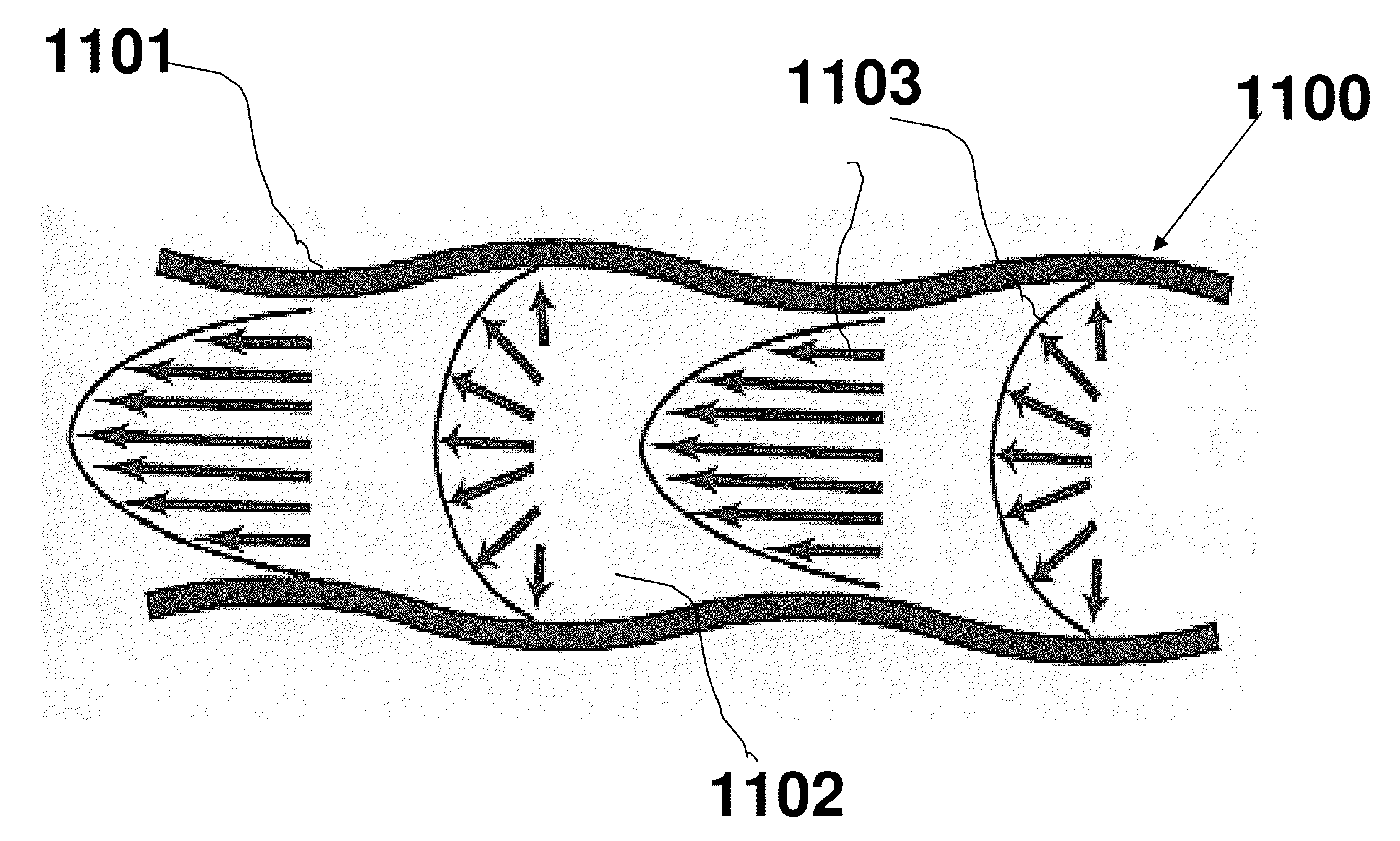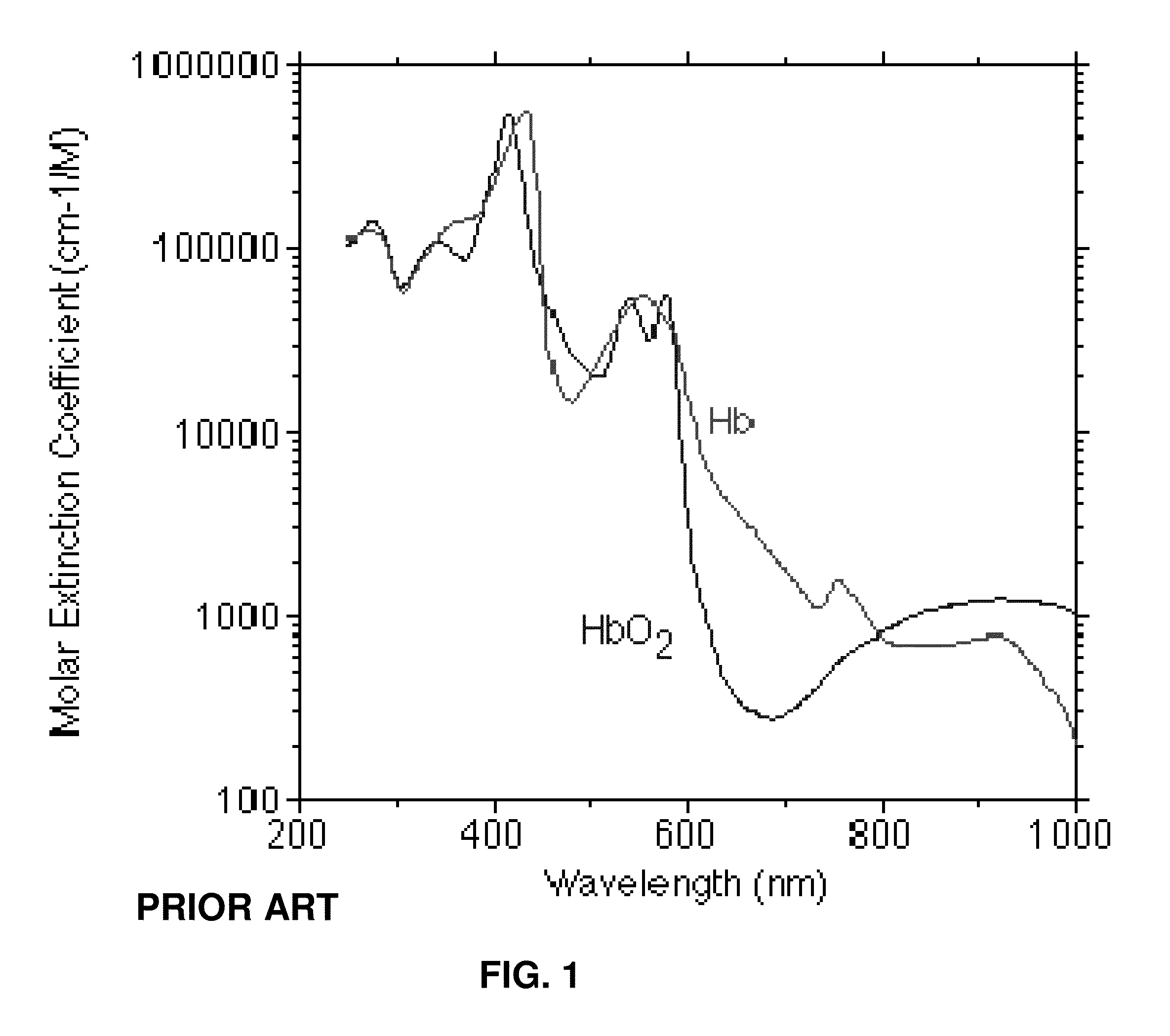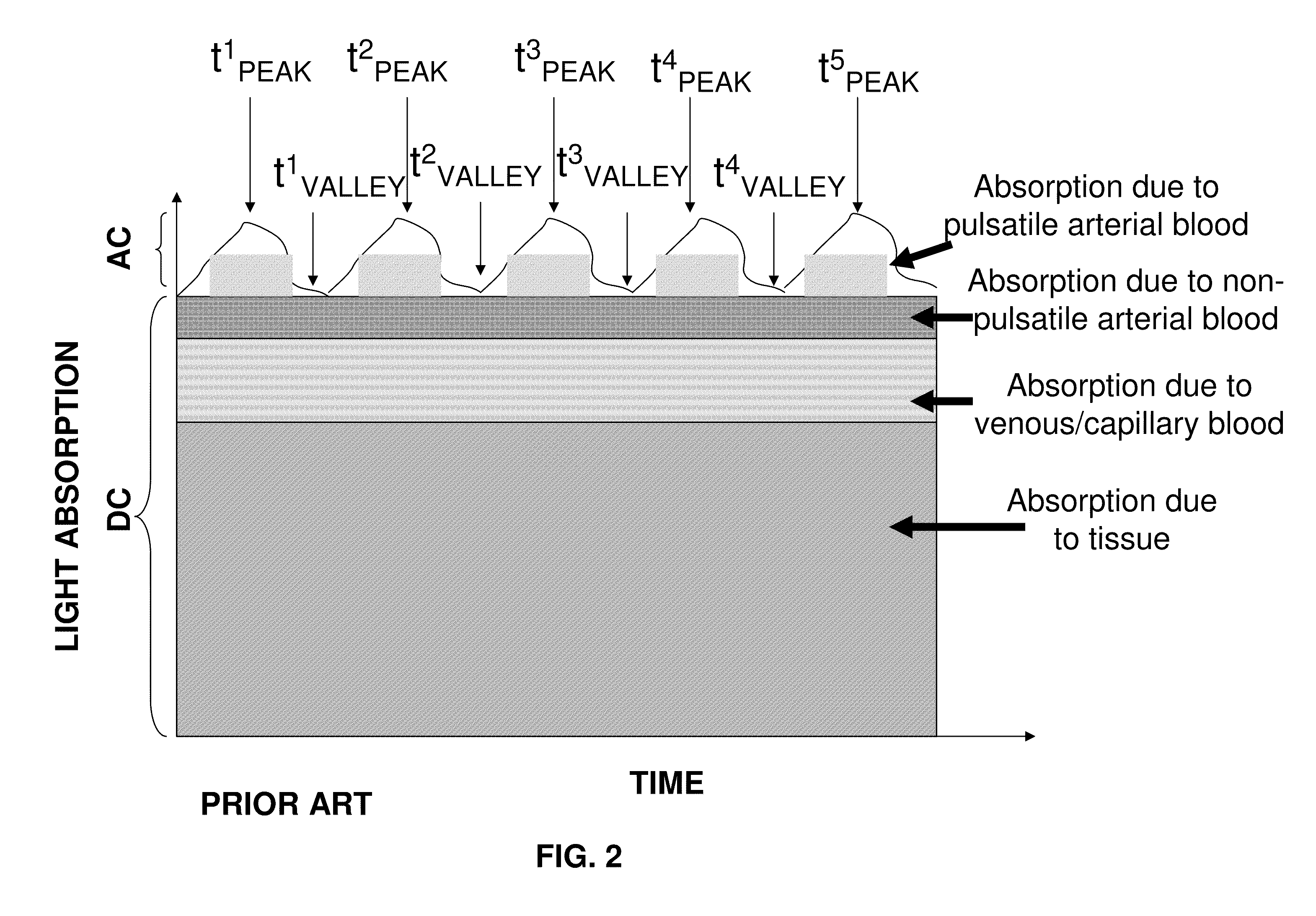Photoplethysmography device and method
a technology of photoplethysmography and in vivo measurement, applied in the field of system and method for in vivo measurement, can solve problems such as random intensity fluctuations and confusion of values
- Summary
- Abstract
- Description
- Claims
- Application Information
AI Technical Summary
Benefits of technology
Problems solved by technology
Method used
Image
Examples
example 1
Computing a Blood Oxygen Saturation parameter in the Presence of Venous Blood
[0099]The present inventors have constructed a ‘wrist hybrid PPG-DLS’ device and have collected data from this device.
[0100]In FIG. 5 illustrates the results under relatively ‘low motion artifacts’ conditions. Although there is indeed a good correlation between the PPG and the DLS signal, it is nevertheless possible to employ the DLS device to remove the ‘noise’ of the venous blood. This technique may also be used to compute a arterial / venous blood concentration parameter relating the absolute and / or relative concentrations of arterial and venous blood.
[0101]FIGS. 11A-11C relate to the differentiation between venous and arterial components of the measured signal by using the DLS. One important calculated parameter in the pulse-oximetry is the so called Gamma (referred to as a ‘R’ in the background section).
Gamma=(AC(red) / DC(red)) / (AC(infrared) / DC(infrared).
[0102]Where AC is the pulsatile component of the si...
example 2
Computing a Blood Oxygen Saturation Parameter in the Presence of Motion Artifacts
[0111]This example relates to an experiment where motion artifact where introduced (i.e. the subject moved his hand) after about 10 seconds. It is possible to see the strong change of the signal affects the PPG signal after 10 seconds (see FIG. 12A). The same signal may also be shown plotted together with DSL.
[0112]FIG. 12B shows this plot for the first 6 seconds (not many motion artifacts). FIG. 12C is the corresponding histogram plot for the case of the first 6 seconds FIGS. 12D-12E relate to the last 10 seconds during motion of the arm In FIG. 12E, certain PPG measurements are rejected (see, for example, step S365 of FIG. 8B)—the histogram is ‘weighted’
[0113]After taking into consideration the DLS signal by rejected all uncorrelated with PPG values and by choosing an appropriated regions of PPG according to the predetermined limits of DLS value we get in the interval 10-20 second the gamma histogram ...
PUM
 Login to View More
Login to View More Abstract
Description
Claims
Application Information
 Login to View More
Login to View More - R&D
- Intellectual Property
- Life Sciences
- Materials
- Tech Scout
- Unparalleled Data Quality
- Higher Quality Content
- 60% Fewer Hallucinations
Browse by: Latest US Patents, China's latest patents, Technical Efficacy Thesaurus, Application Domain, Technology Topic, Popular Technical Reports.
© 2025 PatSnap. All rights reserved.Legal|Privacy policy|Modern Slavery Act Transparency Statement|Sitemap|About US| Contact US: help@patsnap.com



